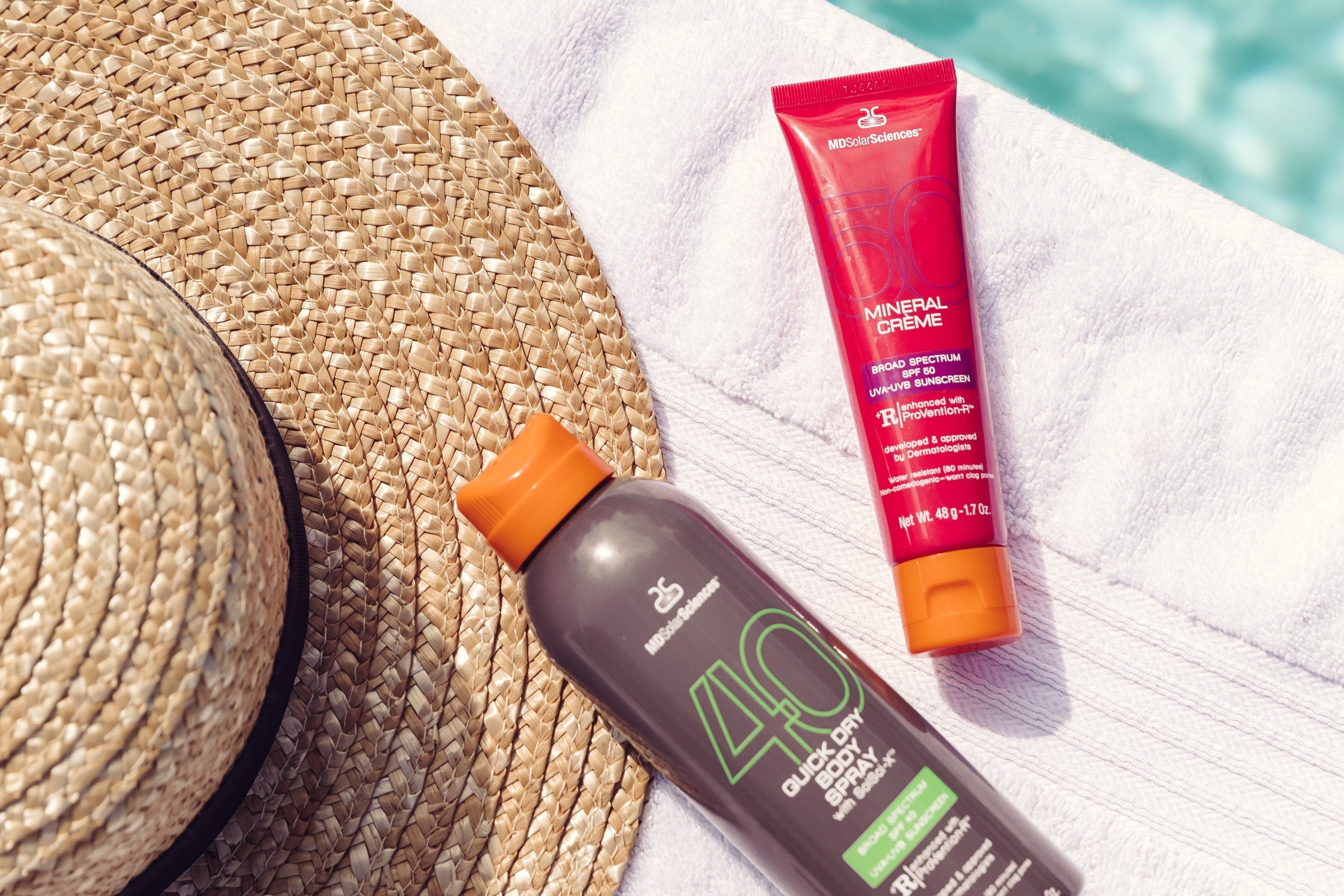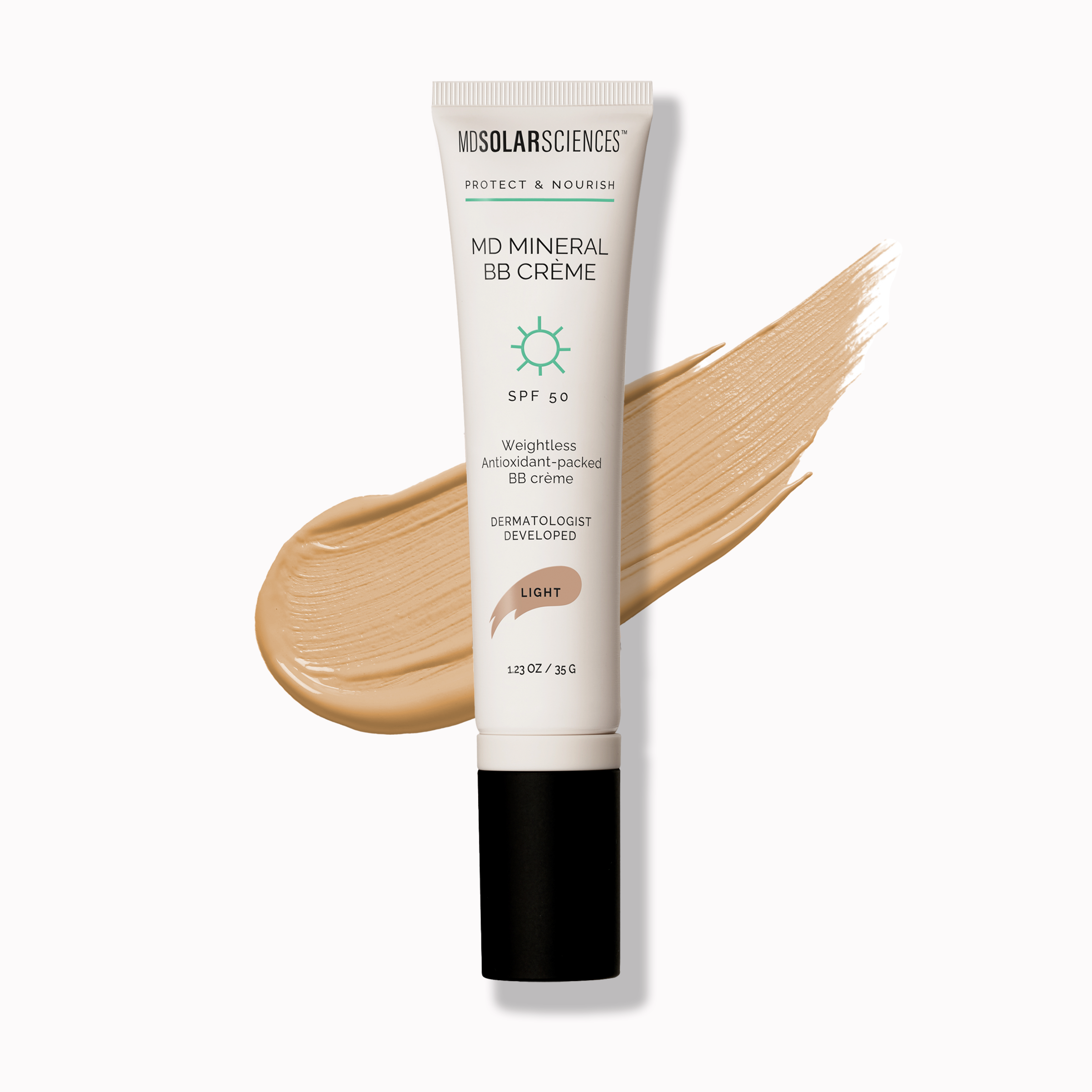Summer is here, and while we should be thinking about SPF all year round, the onset of the warmer season means sunscreen is going to be front and center of our skin care routines. But how much do we really know about sunscreen? What does SPF mean? Does a higher SPF mean better protection? To give us the lowdown on SPF, we turned to dermatologist and MDSolarSciences friend, Dr. Diane Berson, for help in answering some of the questions that confound most of us about sunscreen.
What is SPF and how do sunscreen companies measure it?
Dr. Diane Berson: The SPF of a product only relates to its protection from the UVB or “burning” rays. The SPF of a product does not mean it protects you from UVA or “aging” rays. Companies use independent testing companies to test the SPF levels in their products in compliance with the FDA testing guidelines.
When choosing a sunscreen, make sure that you’re choosing a product that has been tested for broad-spectrum protection (protects from both UVA and UVB). That way, you’ll be protected not only from the immediate effects of sun damage (sunburn) but also from long-term damage that shows up as wrinkles, sunspots and worse–skin cancer.
What does it mean when a sunscreen is SPF 50?
Dr. Berson: An SPF 50 product protects you from 98% of the UVB “burning” rays that penetrate your skin.
Before the FDA introduced its new labeling requirements a few years ago, SPF levels caused a lot of confusion for customers. Some people thought that the SPF number corresponded to the number of minutes the sunscreen protected the skin, the percentage of rays the sunscreen filtered, or other misguided logic. The SPF number theoretically correlates to how long a person can stay in the sun without burning. For example, when wearing an SPF 30, you can remain outside for 30 times longer than if you were unprotected. However, that doesn’t take into consideration your skin type, any toweling, swimming, sweating or the level of the UV index that particular day. Confusing, right?
Now, all sunscreens have mandated directions and water resistance testing results visible on their packaging. Sunscreen can either be effective for up to 40 minutes or up to 80 minutes in water. It’s much easier for people to understand the need to reapply at least every 2 hours. You should reapply every 40 or 80 minutes while swimming or sweating, depending on the product. These directions are now easily seen on the packaging.
Why did the FDA limit the SPF to just 50? What’s wrong with sunscreens higher than 50?
Dr. Berson: Since an SPF 50 protects from 98% of UVB rays and nothing offers 100% protection, there is no statistical significance to using an SPF over 50. Products with higher SPF values may be misleading and give consumers a false sense of security.
When customers see a product marketed as an SPF 100+, some may think that means they’re protected from 100% of the UVB rays, or that the product will work all day. There’s no such thing as a total sunblock—and all products must be reapplied in accordance with the FDA guidelines.
Does a higher SPF mean better protection? Should we all just use SPF 50 then instead of 30 and 15?
Dr. Berson: An SPF 50 offers a high level of protection and is best for those with a history of skin cancer or those that are fair skinned or at higher risk for skin cancer. An SPF 15 covers 93% of UVB rays and an SPF 30 covers 97% of UVB rays. There is a fairly big difference between an SPF 15 and 30 but the difference in coverage lessens considerably between SPF 30 and SPF 50. Protection afforded by products over SPF 50 is only incremental.
What is the easiest way to know if a sunscreen provides proper protection?
Dr. Berson: You must look for sunscreens that provide broad-spectrum protection and say so on the label. Only broad-spectrum sunscreens protect you from both UVA and UVB rays. Using sunscreen products that contain antioxidants gives you another layer of protection. Wearing sun-protective clothing, sunglasses and wide-brimmed hats is also important in total sun protective care.
Cover up, slather up and read up! Think about it: we are hardwired to check the nutrition facts on foods before eating them, but we should also always check the drug facts on sunscreens. It’s just as important to understand what we’re putting on our skin to protect us and our families.
Now that you’re armed with a higher SPF IQ, it’s time to pack those beach bags and enjoy a fun, sun-safe summer. and remember that your SPF habit should continue in the Fall and Winter!







